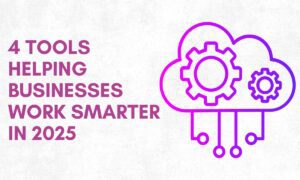The Birth and Expansion of Blockchain
Blockchain technology first entered public consciousness with the emergence of Bitcoin in 2009. Created by the mysterious figure Satoshi Nakamoto, Bitcoin introduced the radical concept of trustless digital money—a decentralized currency system that operates without a central authority.
The innovation at the heart of Bitcoin lies in its use of a distributed ledger, where all participants in the network share the same record of transactions. This solved the infamous double-spending problem, making data tampering or fraudulent transactions virtually impossible.
Bitcoin, often dubbed “digital gold,” gained traction primarily as a store of value, but its use case remained narrow—mainly limited to peer-to-peer value transfers. It wasn’t built to support more complex financial instruments or programmable applications.
Ethereum: Expanding the Use Cases
That changed in 2015 with the launch of Ethereum, spearheaded by Vitalik Buterin and others. Ethereum introduced smart contracts—self-executing programs that run on the blockchain when predefined conditions are met.
This breakthrough transformed the blockchain from a payment protocol into a platform for decentralized applications (DApps). Developers could now build entire ecosystems of services on Ethereum, including DeFi protocols, NFT marketplaces, and DAO infrastructures. It opened the door to a more interactive, programmable blockchain economy.
The Scalability Bottleneck
However, as the Ethereum ecosystem expanded, cracks began to show—particularly in terms of transaction speed and cost. Ethereum’s mainnet has a relatively low transactions-per-second (TPS) limit. As demand surged—especially during the DeFi boom in 2020 and the NFT craze in 2021—the network became congested, causing gas fees to skyrocket.
At the height of these periods, even basic transactions could incur fees of tens of dollars, making the network economically unviable for many users, particularly those engaging in microtransactions or experimenting with new DApps.
This led to a growing demand for more scalable solutions—blockchains capable of supporting real-world applications and mass adoption without sacrificing decentralization or security.
Polygon: The Layer 2 Solution Scaling Beyond Ethereum’s Limits
As Ethereum’s scalability challenges became more apparent, numerous approaches emerged to address the growing pains of the world’s leading smart contract platform. Among these, Polygon has stood out as one of the most promising and widely adopted solutions.
Originally launched in 2017 as Matic Network, the project was rebranded as Polygon in 2021 to reflect its expanded vision of becoming Ethereum’s Internet of Blockchains. Polygon operates as a sidechain network that connects seamlessly with Ethereum while offloading transaction processing to its own high-performance blockchain.
How Polygon Works: A Scalable Companion to Ethereum
Polygon’s core idea is simple yet powerful: handle most of the transaction processing and validation off-chain, then submit periodic summaries (or checkpoints) back to the Ethereum mainnet. This design allows Polygon to maintain Ethereum’s security and decentralization, while achieving higher throughput and significantly lower fees.
The network utilizes its own Proof-of-Stake (PoS) consensus mechanism to secure transactions. Validators produce blocks independently, and the results are anchored to Ethereum at regular intervals to ensure finality and security. Thanks to this architecture, users can enjoy a dramatically improved user experience.
According to recent reports, the average transaction fee on Polygon is just $0.007, a stark contrast to the often-prohibitive gas fees on Ethereum, which have historically reached tens or even hundreds of dollars during periods of network congestion. Moreover, transaction speed is greatly enhanced, enabling developers to deploy applications that would be impractical on Ethereum alone.
Real-World Adoption: From DeFi to Major Brands
Polygon’s low-cost, high-speed environment has enabled developers to bring bold ideas to life—many of which were previously constrained by Ethereum’s performance limitations. As a result, the Polygon ecosystem has rapidly expanded to support DeFi protocols, NFT marketplaces, DAO frameworks, and even enterprise blockchain applications.
Some of the most notable real-world integrations include:
- Starbucks Odyssey: A blockchain-based loyalty program where digital stamp collectibles (NFTs) are minted on Polygon.
- Reddit Avatars: Millions of Reddit users have adopted customizable NFT avatars, all issued via the Polygon network.
These examples highlight how Polygon is not just a technical upgrade to Ethereum—it is becoming a gateway to mainstream blockchain adoption, serving both crypto-native and non-crypto audiences at scale.
With its growing developer base, enterprise partnerships, and ever-expanding list of supported applications, Polygon has firmly established itself as a key player in the Layer 2 landscape—one that’s helping to usher blockchain into the next phase of usability and mass adoption.
Polymarket: Redefining Prediction Markets on the Blockchain
Among the many successful use cases within the Polygon ecosystem, Polymarket stands out as a prime example of how blockchain can unlock new forms of user participation in real-world decision-making.
Polymarket is a decentralized prediction market platform, allowing users to place bets on the outcomes of future events across politics, economics, sports, and global affairs. Questions like “Will Bitcoin surpass $100,000 by year-end?” or “Will Candidate X win the upcoming election?” form the basis of markets where users stake capital and, if correct, earn a profit.
While prediction markets are not new, Polymarket distinguishes itself by delivering a trustless, blockchain-based experience that is both efficient and accessible. The platform operates entirely on smart contracts and uses USDC, a dollar-pegged stablecoin, instead of fiat currencies. This setup eliminates the need for a centralized operator while ensuring fast and secure settlement of trades.
Why Polymarket Works: Powered by Polygon
One of Polymarket’s greatest strengths is that it runs on Polygon, a Layer 2 scaling solution for Ethereum. Earlier blockchain-based prediction markets—like Augur, built on Ethereum’s mainnet—struggled with high gas fees and complex user interfaces, limiting adoption.
Polymarket, by contrast, offers low transaction costs (often just pennies) and near-instant execution. This has enabled a fluid and intuitive user experience, where even small-stake bets feel seamless. All users need is a crypto wallet (e.g., MetaMask) to participate.
The result? A vibrant, high-volume global marketplace for real-time forecasting. During major events like the 2024 U.S. presidential election, Polymarket saw over $3.5 billion in cumulative trading volume, drawing attention from both crypto communities and mainstream audiences.
Polymarket’s prediction data—aggregated from thousands of active participants—has proven accurate and insightful enough that outlets like The New York Times and Bloomberg have cited its market odds as a reflection of public sentiment.
A Case Study in Applied Blockchain Utility
Polymarket is more than just a betting platform; it’s a demonstration of how “the wisdom of the crowd” can be captured, quantified, and shared on-chain. By leveraging Polygon’s scalability, Polymarket has turned what was once a niche concept into a real-time, large-scale forecasting tool.
This shows that the Polygon ecosystem isn’t merely replicating existing web services—it’s enabling entirely new categories of decentralized applications that weren’t viable before. In that sense, Polymarket marks a watershed moment in Ethereum’s journey toward real-world usability.
Regulatory Considerations
Naturally, platforms that handle large volumes of capital attract attention from regulators. Polymarket has faced scrutiny from authorities like the U.S. Commodity Futures Trading Commission (CFTC) and has seen certain services restricted in specific jurisdictions.
Despite these challenges, Polymarket continues to operate as a shining example of blockchain’s social utility—where transparent, permissionless markets contribute to a more informed public. The platform not only reinforces the power of smart contracts but also showcases how decentralized systems can serve real human curiosity and decision-making.
Polycat.io: A New Breed of Blockchain-Based Micro-Investing Games
The innovation within the Polygon ecosystem doesn’t stop at prediction markets. A new wave of experimental platforms is emerging—among them, Polycat.io, a fast-paced, blockchain-powered Web3 trading game that’s capturing attention for its bold take on short-term speculation.
At its core, Polycat.io introduces a gamified investment experience where users predict whether asset prices—like Bitcoin—will go up or down within the next 60 seconds. While this may sound similar to traditional binary options or price prediction games, Polycat sets itself apart by executing the entire experience on-chain, without any centralized control.
How It Works: Predict, Stake, Win—All in One Minute
Polycat.io’s flagship gameplay is simple yet engaging. Every minute, a new round of the “Up or Down” game begins. Players are given 30 seconds to enter the round by staking their prediction using tokens within the Polygon ecosystem. If they believe the price will rise, they stake into the Up Pool. If they think it will fall, they join the Down Pool.
Once the round begins, the final price is fetched from a real-time price oracle, and after 30 seconds of mining (i.e., price monitoring), the outcome is recorded. Those who predicted correctly share the winnings from the losing pool.
Importantly, all betting and payout processes are governed by smart contracts, ensuring instant settlements, no human interference, and full transparency. Winnings are automatically distributed to users’ wallets based on the outcome—no need to request withdrawals or wait for manual approval.
Why It Runs on Polygon
To make high-frequency, low-stakes betting viable, speed and affordability are critical. That’s why Polycat.io is built on Polygon, whose low transaction fees (often under a cent) and near-instant processing times are essential to handling dozens of rounds per hour with thousands of users participating simultaneously.
Another strength is accessibility. There’s no need for sign-ups, KYC, or centralized deposits—users simply connect their Web3 wallet (like MetaMask) and begin playing. Required tokens can be easily obtained from decentralized exchanges, and the entire experience is frictionless and anonymous, mirroring the permissionless spirit of blockchain.
More Than a Game: A Case Study in Transparent DeFi Gaming
Polycat.io marks a compelling example of how blockchain can fuse gaming and finance to create new, engaging user experiences. While similar coin-prediction platforms have existed in the past, Polycat pushes the concept forward by offering a fully on-chain experience, where every trade, result, and payout is visible on the blockchain.
This approach removes any reliance on a central administrator or back-end server, which is often a weak point for fairness in traditional online gaming. In Polycat, the code is the judge, and participants can verify every outcome themselves.
From a broader perspective, Polycat.io can be seen as a new flavor of GameFi—a fusion of entertainment and decentralized finance that provides both fun and profit potential. It especially appeals to younger, risk-tolerant users who enjoy high-intensity trading or gaming, helping to diversify the Polygon ecosystem’s user base.
As Web3 continues to evolve, platforms like Polycat.io remind us that blockchain isn’t just about security and finance—it’s also about designing interactive, fair, and open experiences that anyone, anywhere, can join with a few clicks.
The Growth Potential of Polycat.io and the Future of the Blockchain Ecosystem
The emergence of micro-investment platforms like Polycat.io is a strong signal that the blockchain ecosystem is rapidly evolving—embracing diverse, experimental ideas that push the boundaries of what’s possible. If Polymarket opened the door to leveraging collective intelligence for credible, real-time forecasting, Polycat.io is exploring new territory at the intersection of entertainment and investment.
These ultra-short-term, gamified prediction mechanisms showcase not just technical innovation, but also a deep understanding of what captivates and motivates modern users. That said, for platforms like Polycat.io to scale sustainably, issues like user protection, speculation management, and legal clarity must be addressed. Nonetheless, the project’s ability to combine speed, simplicity, and decentralization suggests strong potential for the evolution of next-generation GameFi and blockchain-based investing tools.
Building the Future: Scaling Solutions Meet Real Utility
Looking ahead, the future of blockchain ecosystems will be driven by the convergence of scaling infrastructure and practical, user-facing applications. Platforms like Polygon—one of the most mature and adopted Layer 2 solutions—continue to iterate on their architecture to support higher throughput and stronger security.
For example, Polygon 2.0, which incorporates ZK rollup technology, promises a leap forward in both performance and privacy. These infrastructure upgrades form the foundation on which “killer apps” like Polymarket and Polycat.io are being built—each of them attracting real users and helping establish a healthy, active ecosystem.
This feedback loop—better infrastructure enables better apps, which in turn attract more users—is central to blockchain’s path toward mainstream adoption.
From Bitcoin to the Real World: Practical Decentralization in Action
What began with Bitcoin’s revolutionary vision of decentralized money has now matured into a broader movement emphasizing scalability, usability, and real-world value. We’re seeing dApps that aren’t just technically impressive, but genuinely useful to the average person.
Platforms like Polymarket prove the value of decentralized prediction markets. Polycat.io, meanwhile, shows how decentralized, gamified trading can be both fun and financially engaging, especially for younger, tech-savvy users. Together, they demonstrate how blockchain can transform finance, gaming, public opinion forecasting, and beyond.
Of course, realizing the full potential of these applications will require regulatory clarity, user education, and ongoing developer innovation. But the path is clear: the seeds planted by Bitcoin and Ethereum are now blossoming through platforms like Polygon, and bearing fruit in the form of applications like Polymarket and Polycat.io.
The blockchain revolution is no longer just an idea—it’s a living, growing ecosystem. And the most transformative changes are yet to come.



































